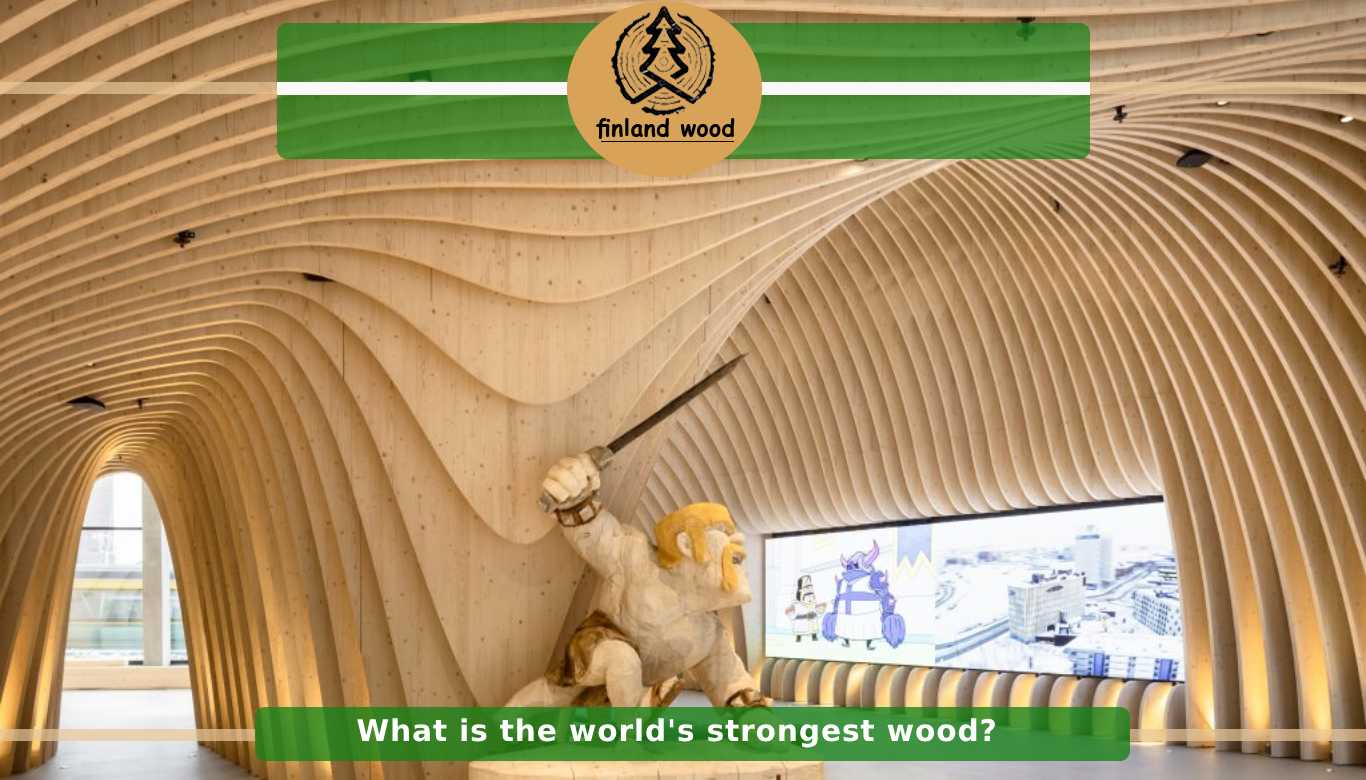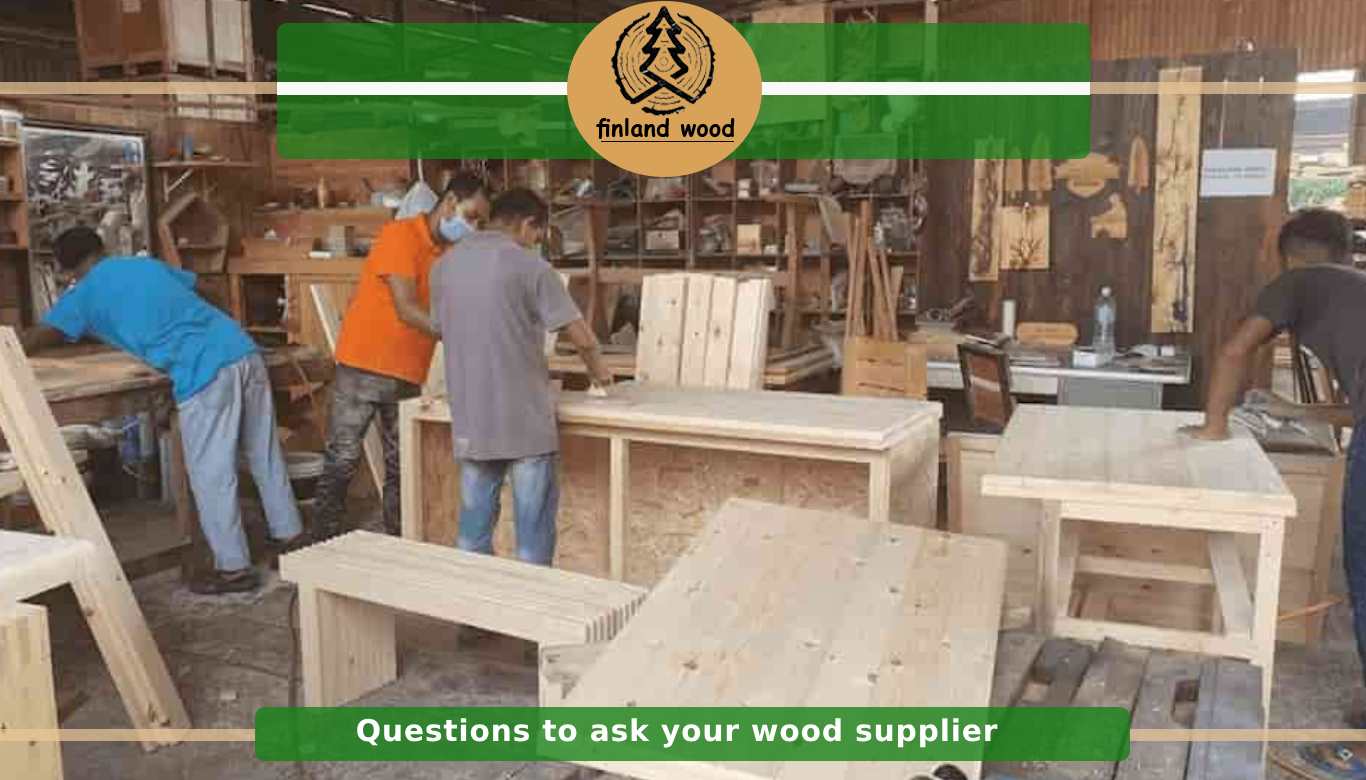“Hardwood” refers to woods that are so dense, compact, and heavy that they do not float in water. Apparently, there is no clear answer as to which is the hardest wood found on this planet. While some sources mention Guayacan tree wood as a record holder among the used woods, according to other information, the South American Ipe tree provides the hardest type of wood in the world. It is also said in other places that the Australian Buloke tree is unbeatable in this regard.
What is the strongest form of wood?
The hardness of wood refers to its resistance to penetration or indentation, in other words, the wood’s ability to resist deformation, wear, and the penetration of hard objects into its surface.
The strength of wood can vary from one type of wood to another, affecting its suitability for different purposes such as furniture making or tool construction.
In general, strong woods have a dense and robust cellular structure, which gives them greater strength. However, wood hardness is not always directly related to density, as there are softwoods with a compact cellular structure that can be relatively hard.
To measure the hardness of wood, a device known as a hardness tester is used, which measures the depth of the indentation left by a hard object pressed onto the wood’s surface. The less the depth of the impression, the greater the hardness of the wood. There are various scales for measuring hardness, such as the Janka scale or the Brinell scale.
Guaiac Wood, also known as Lignum Vitae
Guaiac wood, derived from the Guaiac tree, has a density of approximately 1.2 grams per square centimeter and competes for the title of the hardest wood in the world. This evergreen tree grows in semi-tropical and tropical regions of the American continent and is increasingly found in the Amazon rainforests.
This wood is rich in resin and was historically used for shipbuilding due to its resistance to external influences. Its distinctive feature is its self-lubricating property. Even propeller shafts and bearings can be made from this hard tropical wood. Since the existence of the Guaiac tree is endangered due to centuries of deforestation, international trade in this strong wood requires approval.
Ipe – The Hardest Wood in the World
Lapacho Amarillo, Ironwood, Diamond Wood, or Ipe – all these are different names for a type of wood. The wood comes from the Lapacho tree, which is native to a specific region in South America. If you search for the term “durability” in the dictionary of wood, you will undoubtedly come across Ipe sooner. This tropical wood has earned the unofficial title of the hardest wood in the world due to its impressive raw density. It ranks logically as Class 1 in terms of durability.
Ipe (scientific name: Tabebuia) is undoubtedly one of the best decking woods in the world. Unfortunately, it comes at a relatively high price, but its expected lifespan of over 25 years speaks volumes. Its interlocked grain growth is also a reason for its attractive appearance.
The 4 strongest Woods in the World
There are various types of wood found across the world, and wood hardness can vary from one region to another. According to the Janka scale, which measures wood’s resistance to penetration, the hardest woods in the world are as follows:
- Lignum Vitae (Guaiacum officinale): A tropical wood native to Central and South America. It has exceptional hardness with a Janka rating of 20,034 newtons (4,500 pounds of force), making it the hardest wood in the world. This wood is used in shipbuilding (blocks, bearings, bushings), mechanical engineering (cutting blades for meat, paper, and other materials), musical instruments like flutes and clarinets, and even in medicine as a natural remedy for various diseases, including arthritis and syphilis.
- Ebony wood (Diospyros spp.): A dense and dark wood found in various parts of the world, including Africa, Asia, and South America. It has a Janka rating of 3,000-3,500 pounds of force (13,344-15,561 newtons). Ebony is used in making musical instruments (electric guitars, violins, and pianos), furniture and handicrafts, toolmaking, and in shipbuilding for structural components like keels and decking.
- Rosewood (Dalbergia spp.): A tropical wood used for crafting high-quality musical instruments and furniture. It has a Janka rating of 2,800-3,000 pounds of force (12,458-13,344 newtons). Some applications of this wood include furniture making, carpentry, construction (flooring, ceilings, windows, panels, doors, etc.), and the creation of artistic objects (sculptures, marquetry, and decorative pieces).
- Bocote (Cordia spp.): A Mexican wood with a distinctive grain pattern and golden-brown color. It is used in making musical instruments and other artistic objects. It has a Janka rating of 2,260 pounds of force (10,054 newtons). Bocote is utilized for crafting musical instruments like guitars, basses, ukuleles, and drums. It is also employed in the creation of luxury items like knife handles and watch cases, as well as in carpentry, instrument making, and furniture construction.
What Is the Best Time of Year to Buy Hardwood?
The best time of year to purchase hardwood, specifically strong and durable hardwood, depends on various factors. In general, it’s advisable to acquire the hardest wood in the world when it is completely dried, as wet lumber tends to become harder and produces less heat.
The ideal time for buying robust hardwood is during spring or summer because most suppliers have better access to high-quality, dry hardwood during these months. Additionally, purchasing lumber off-season might lead to more affordable prices and a wider selection of delivery options.
It’s essential to keep in mind that proper drying of wood can take up to a year. Therefore, it’s wise to purchase your hardwood well in advance so that it has sufficient time to dry before use, especially if you plan to use it during the winter.
Review of the strongest wood on the market
To determine the hardest and most durable wood in the world, specialized tests are employed. Wood hardness is measured using the Janka hardness test. This test essentially measures the force required to push a steel ball with a diameter of 0.444 inches into the wood to a depth equal to half the ball’s diameter. Of course, there are other methods to identify the hardest wood available in the market. For example, you can bend the wood until it breaks, try to twist it, or place heavy objects on it to see how long it takes to undergo complete failure.
Additionally, in the test for the hardest wood in the world, resistance to indentation is an indicator of wood’s durability or performance. In the Janka hardness test, the wood specimen to be tested should have precisely 12% moisture content, a thickness of 2 inches, a width of 2 inches, and a length of 6 inches, free of knots, and then a steel ball is pressed into the hardwood at a rate of 0.25 inches per minute. Currently, some of the hardest woods available in the market, including water-resistant woods, are oak, thermo wood, and Russian wood.






